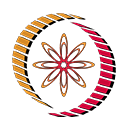1. Electronic Instrumentation and Measurements: David A. Bell
2. A course in Electrical and Electronic Measurements and Instrumentation: A. K. Sawhney
3. Basic Electrical Measurements: M B Stout
4. Electrical Measurements and Measuring Instruments, E.W Golding, F.C Widdis
Part I: Electrical Measurements: Chapter wise study material
| Chapters |
|---|
| 1 | Electromechanical instruments
Chapter 3 of David Bell's Book
Sections to read:
3-2 (operating forces only),
3-3,
3-4,
3-5 (Only simple attraction and siple repulsion type),
3-6(Excluding Quadrant-type Electrostatic Voltmeter),
3-8 |
|---|
| 2 | Electromechanical Ammmeters, Voltmeters and Ohmmeters
Chapter 4 of David Bell's Book
Sections to read:
4-1,
4-2,
4-3,
4-4,
4-5
|
|---|
| 3 | Low, Medium and High Resistance Measurement
Chapter 8 of David Bell's Book
Sections to read:
8-1,
8-2,
8-3 (Only four-terminal Resistors and Kelvin Bridge),
8-5 (only Voltmeter and Ammeter Method and Guard wire and Guard Ring),
8-6 (if time permits only Hand-cranked Megohmmeter)
|
|---|
| 4 | Electro-mechanical wattmeters and energy meters
Chapter 16 of David Bell's Book
Sections to read:
16-1,
16-2,
16-3 (if time permits),
16-4 (excluding single wattmeter method),
16-5, 16-7 (excluding energy meter error sources and correction) |
|---|
| 5 | Potentiometers: DC and AC
Chapter 14 of David Bell's Book
Sections to read:
14-3 (Basic DC Potentiometer),
14-4 (Kelvin-Varley Voltage Divider),
14-5,
Additional: Question: Why or when Potentiometers are used? Ans: No loading current |
|---|
| 6 | Impedence Measurement: AC Bridges
Chapter 9-10 of David Bell's Book
Sections to read:
9-1,
Chapter 10 Completely,
DON'T Memorize the names of the bridges. We shall never ask you to draw Maxwell, Anderson, Carey-Foster, ... bridges
DO- Understand and remember the generic bridge balance equation both in product form as well as ratio form
- Be able to quickly recognize whether a given bridge can be balanced or not
- Most bridges are either a product bridge or a ratio bridge, be able to quickly find the balance equation of such a bridge
- Be able to find bacance equation of any arbitrary bridge
- Be able to design a product or a ratio bridge to measure an unknown inductance or capacitance and find the balance equation
- Be able to design a product or a ratio bridge to measure an unknown inductance or capacitance under the constraints such as you do not have any standard inductor (or capacitor) or you do not have standard high (or low) value resistances etc.
- Understand that in AC bridges the balance is obtained through iterative and alternate tuning where the convergence is an isuue
|
|---|
| 7 | Instrument transformers: CT & PT
What you should know- Why or when instrument transformers are used?
- Equivalent circuit of a transformer
- Phasor diagram of a transformer
- Why insturument transformers are used (range changing, safety and other causes)?
- What is ratio error?
- What is phase angle error and in what context this is important?
- To justify from the phasor diagram or equivalent circuit why the leakage impedance should be minimized in a PT?
- Why the no-load current should be small in a CT?
- Why the secondary of a PT should never be shorted?
- why the secondary of a CT should never be opened?
|
|---|
| 8 | Measurement errors
Chapter 2 of David Bell's Book
Sections to read:
2-3,
|
|---|
| 9 | Miscellaneous
Magnetic Measurement: Chapter 17 of David Bell's Book
Sections to read: 17-2 (Hall effect Sensor), 17-3 (Magnetic Fulx measuremet with a Ballistic Galvanometer)
|
|---|
Part II: Electronic Instruments: Chapter wise study material
| Chapters |
| 1 | From Flip-Flops to Couters
Chapter 6 of David Bell's Book
Sections to read:
6-1,
6-3,
6-4
|
| 2 | Op-Amp
|
| 3 | Digital Frequency meter
Chapter 7 of David Bell's Book
Sections to read:
7-3,
7-4,
7-5,
|
|---|
| 4 | Digital Voltmeter
Chapter 7 of David Bell's Book
Sections to read:
7-1,
|
| 5 | ADC and DAC
Chapter 6 of David Bell's Book
Sections to read:
6-5,
6-6,
|
| 6 | Instrumentation with opamps
Chapter 5 of David Bell's Book
Sections to read:
5-2,
5-3,
5-4,
5-5,
|
|---|
| 7 |
Instrumentation with transistors
Chapter 5 of David Bell's Book
Sections to read:
5-1,
|
| 8 | Function Generators
Chapter 13 of David Bell's Book
Sections to read:
13-2,
13-3,
|




DOWNLOAD APP
FOLLOW US